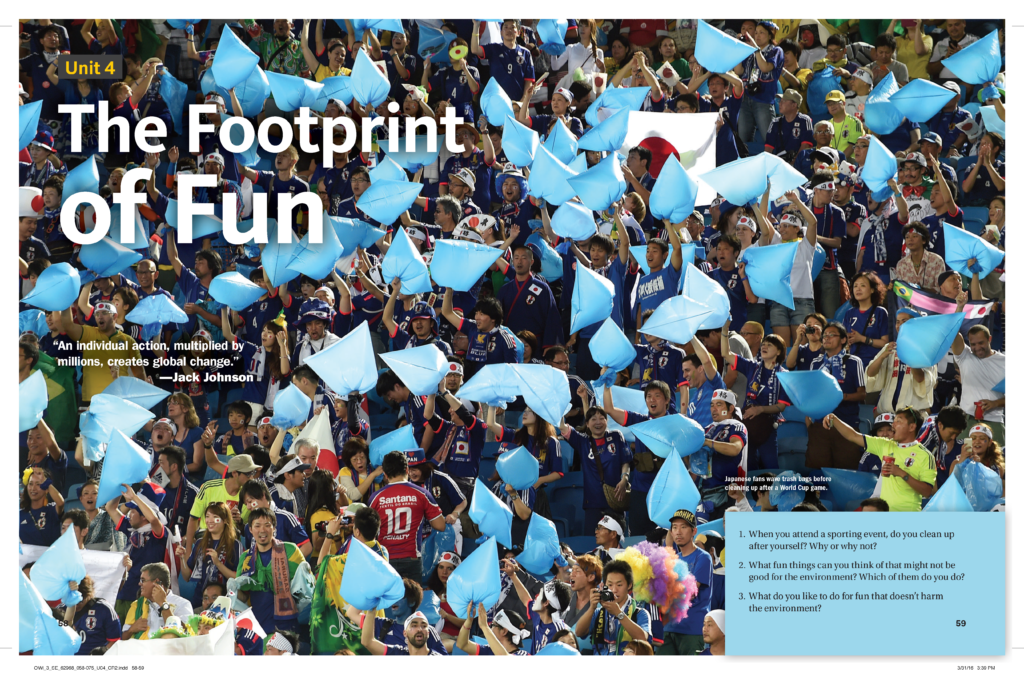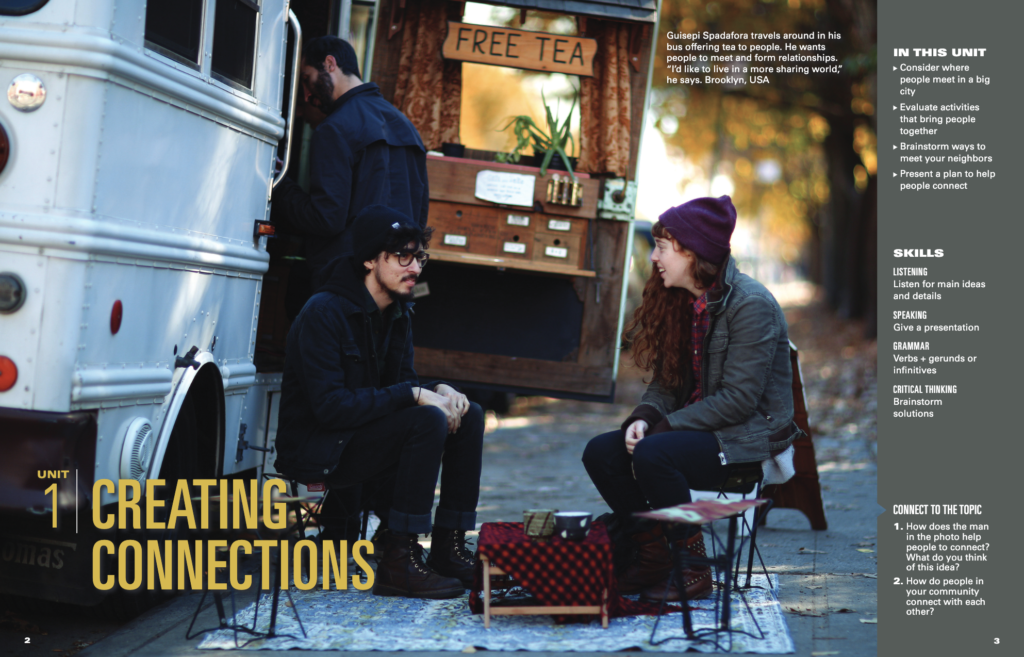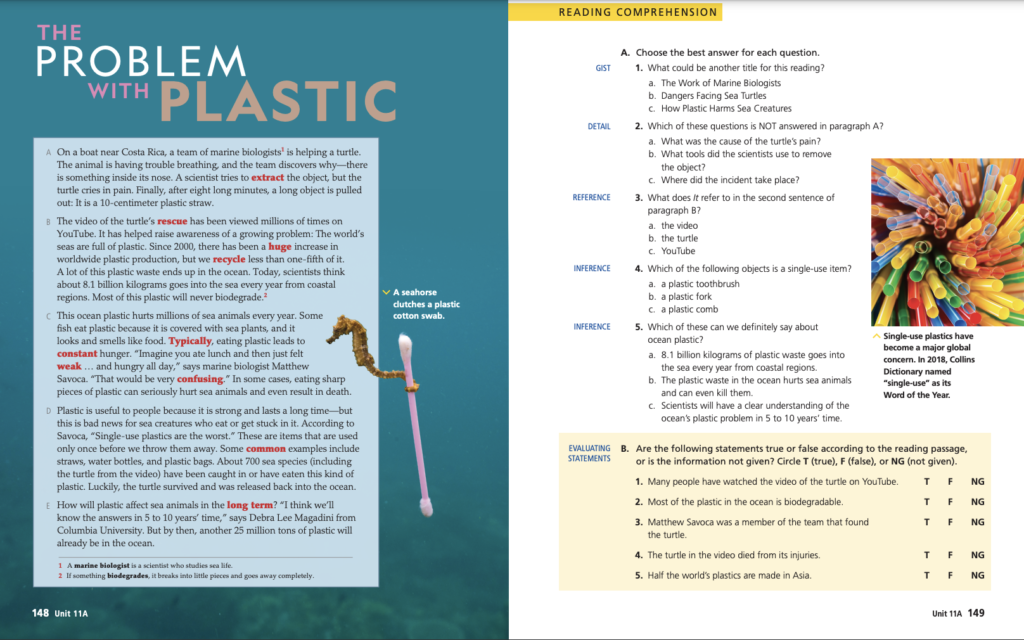As English language teachers and educators on the path of enrichment, we’re always on the lookout for new ideas and activities that we can incorporate into our classrooms to enrich our students’ learning experience. In the past, I would spend hours trawling my favorite ELT resource sites looking for that gem of an activity to use in my class on a Monday morning. However, in recent years I’ve started to expand my view away from the sometimes enclosed world of ELT to explore ideas and trends from more mainstream education. This can be quite time-consuming but it’s exactly how I came across one of my favorite discoveries: visible thinking routines.
So what exactly are visible thinking routines? Originating out of Project Zero, a research project based at Harvard University, they are “a set of mini-strategies in the form of a set of questions or a sequence of steps used to scaffold and support students’ deeper thinking”, as well as deepen content learning. It’s important to note that while not explicitly created for the English language classroom, many of them are easily usable across a range of ages and levels with minor or no tweaking, making them a really great resource. Indeed, there are currently there are over 50 different routines within the Visible Thinking Routines Toolbox, split over 10 different categories (including global thinking, possibilities & analogies, objects & systems, synthesizing & organizing ideas).
So, why should we use them in the English language classroom? To answer this question we have to ask the broader question of what is the purpose of education as a whole. Is it to teach students different subjects to help them pass exams, or is it something deeper than that? I think all would agree that it goes beyond the surface of teaching particular subjects and that the real purpose of education is to give students a set of skills, values, and knowledge to survive and thrive in the real world. Included near the top of that list is the ability to think in both critical and creative ways. As such, giving our students the opportunity to develop their cognitive abilities is vital and this is what using thinking routines allows us to do in an often seamless, non-intrusive way.
In respect to our classes as English teachers, the added benefit of including them is that they also facilitate communication. Simply put, thinking equals communication (authentic communication at that) and that is what English lessons should be all about. In other words, thinking routines help create learning opportunities as well as enhancing learning and the learning experience. So, with that in mind, here are some of my favorite thinking routines that are worth trying out in your lessons.
See-Think-Wonder
This is a simple thinking routine that can be used with all ages and levels, tapping into learners’ innate curiosity and encouraging them to make careful observations and thoughtful interpretations of images. This is a perfect routine to do at the start of a topic or lesson to pique students’ interest and activate schemata. What’s more, it’s a perfect fit for National Geographic Learning courses given the rich photographic content.
Step 1: Choose a suitable, high-interest photograph
Step 2: ask students to look at the photograph and talk about what they can see (e.g. I can see
Step 3: tell students to share with each other what they think about the photograph (e.g. I think…
Step 4: ask the students what they wonder about the photo (e.g. I wonder why…?). This can then lead into a wider classroom discussion with students hypothesizing and making suggestions.

See, Think, Me, We
This is another photographic-based routine that takes the See, Think, Wonder routine a stage further by encouraging students to make both personal and global connections. The last two stages require more careful reflection and interpretation and the use of higher-order thinking skills.
Step 1: Choose a suitable, high-interest photograph
Step 2: Ask students to look at the photograph and talk about what they can see (e.g. I can see
Step 3: Tell students to share with each other what they think about the photograph (e.g. I think…
Step 4: Ask students to think about what connections they can make between the image and themselves (e.g. the image reminds me of…, or the image makes me feel…)
Step 5: ask students to think about how the image connects to the bigger picture – about the world and our place in it.

The Three Whys
This is a simple routine that encourages students to make connections to a topic and to think about that topic from multiple perspectives – personal, local, global. As such it’s best used at the beginning of a unit of work.
Step 1: tell the students the topic that they’re going to be studying in the new unit (or the subject of the text they’re going to read)
Step 2: ask them to think about why the topic might matter to them (personal)
Step 3: ask them to think about why the topic might matter to people around them (family, friends, town, country) (local)
Step 4: ask them to think about why the topic might matter to the world (global)
Step 5: put students into groups to discuss their responses before conducting class feedback

Think-Puzzle-Explore
This routine best used at the start of a unit or before a reading and is a variation of the more familiar KWL routine. It starts off by activating students’ prior knowledge, then generating ideas and curiosity before setting the stage for deeper inquiry.
Step 1: share the title of the topic or reading to be covered in class (you could also use a photo too) with the class
Step 2: ask students (in pairs or small groups) to discuss what they think they already know about the topic before conducting class feedback.
Step 3: ask students what questions or puzzles they have about the topic (this can create the basis for classroom discussion as well as providing a clear purpose for reading).
Step 4: ask them what the topic makes them want to explore (this sets the foundation for further, independent inquiry)
Question Starts
This is another routine that is best used with older learners at the start of a unit or before a reading. It’s a question brainstorming activity that supports students who need help in developing good questions that provoke thinking and inquiry into a topic by providing them with language frames to use.
Step 1: put your students into groups and ask them to brainstorm 12 questions about the topic using these question frames. At this stage, they are NOT answering them.
Why…? What are the reasons…? What is the purpose of…?
How would be different it if…? What if we knew…? Suppose that…?
What if…? What would change if…? What would happen if…?
Step 2: elicit some questions from each group in-class feedback
Step 3: ask students to review their questions and select 3-4 of them to discuss
Step 4: ask students to reflect on the process – what new ideas did the process did give them about the topic?
The 4Cs
This is a great post-reading routine that provides a structure for text-based discussion for higher-level learners. The routine is designed to help them make connections, challenge ideas in the text, identify key concepts and consider what implications it might have. It’s also important to note that at each step of the routine students have time to consider the questions before sharing their ideas with their groups. You can then conduct class feedback after each step, or at the end of the activity.
Step 1: ask students to think about what connections can they make between the text and their life or other learning?
Step 2: ask students to consider what ideas or assumptions in the text they disagree with or want to challenge or argue with.
Step 3: ask students to decide what key concepts or ideas are the most important in the text.
Step 4: ask students what changes in attitude, thinking or action are suggested by the text, either for you or for others.

I Used to Think, Now I think
This is a routine that links nicely to an inquiry-based approach and which is best used at the end of a unit of work, although it could be done after a receptive skills lesson. The routine encourages students to reflect on what they have learned about a topic and how their knowledge, views, and opinions (might) have changed across the course of the unit or lesson, and by its nature, it also helps students consolidate what they have learned.
Step 1: Ask students to complete the sentence “I used to think… about this topic.”
Step 2: Ask students to complete the sentence “Now I think… about this topic.”
Step 3: Put students into small groups to discuss what they’ve written before conducting class feedback
Hopefully, that’s given you a taste for what visible thinking routines are all about as well as some ideas to try out in your class. As with any routine the first time you do these students will need extra support and reassurances, but the more you include them in your lessons, the more familiar students will become, thus increasing their effectiveness.

Reflect on what you read:
What did you used to think about visible thinking routines? What do you think now?
How might you use them in your classroom to develop thinking and drive communication?
What will you do to explore them more?



Thank you for sharing all these routine. I found all of them workable and exciting as well. I am definitely gonna try out some of the routines in my class.